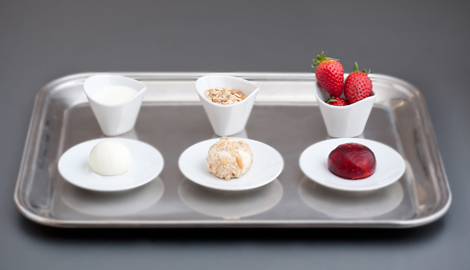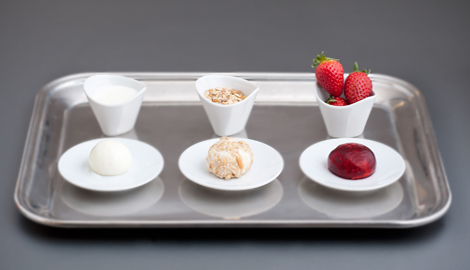If you want to know why the earth and waterways are quickly morphing into giant garbage heaps, look no further than your pudding cup. Desserts, sodas, yogurts, and every other processed treat that comes tucked inside a plastic container are creating a slew of plastic pollution. But Harvard scientist David Edwards has an innovative — and tasty! — solution: Make packaging as delicious as the goods held inside.
EPA statistics [PDF] show that containers and food packaging constitute 32 percent of U.S. household waste, a figure that can accurately be described as “whopping.” But Edwards’ WikiCells, which he hopes to start releasing in May, replace all that needless plastic cruft with delicious edible coatings.
“The notion [of Wikicells] is that you are englobing liquid, foam, or something else in a soft membrane held together by food particles that are being connected by electrostatic charges to each other and to a small amount of natural polymer.” The soft membrane could be surrounded by a harder egg-like shell if necessary–something made out of chocolate, rock candy, or even algae. If that’s hard to imagine, think of it this way: a tomato and basil membrane that houses gazpacho, a chocolate membrane holding hot chocolate, or an orange membrane containing orange juice.
“Membranes” don’t sound very appetizing, and there’s a bit of a hygiene concern too — if your soup comes in its own edible skin instead of in a container, will you really want to just throw it in your lunch bag? (Edwards says you can wash membrane-encased foods like an apple, so maybe that’s okay.) But if WikiCells could help clean up plastic pollution like that found in the Great Pacific Garbage Patch, I’ll gladly take a little membrane with my gazpacho.





